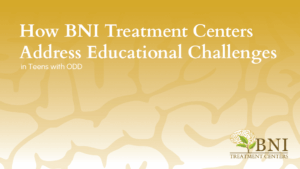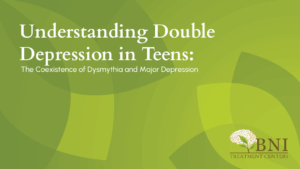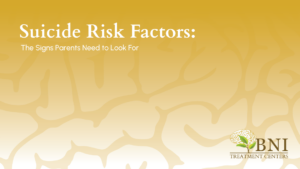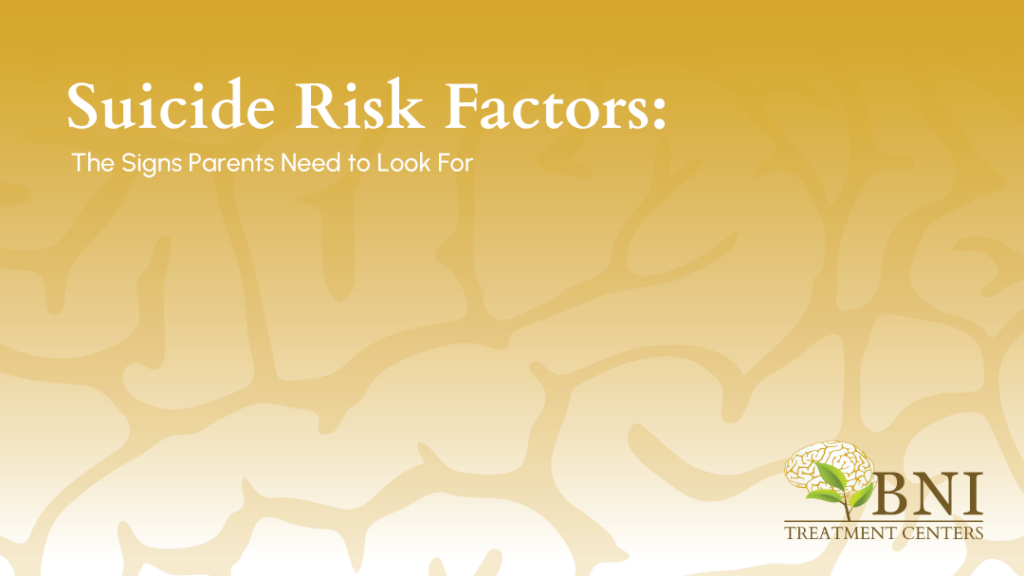
The risk of suicide is always there, especially in adolescents. Peer pressure, substance use, bullying, and academic success are pinned against teens to remain competitive and relevant, resulting in declines in mental health.
Are there risk factors for suicide? Yes, and recognizing them could save lives. In Los Angeles County, over 300 youth suicides occurred between 2021 and 2023. The surrounding counties experienced even higher rates, showing that despite a low number, mental health attention is needed for teens and young adults.
At BNI Treatment Centers, we excel in addressing and treating suicidal ideation in teens. Today, we are discussing suicide risk factors and what parents need to look for to prevent tragedy.
Suicide Risk Factors: What Every Parent and Caregiver Should Know
When it comes to suicide, no parent wants to think their child would ever think or attempt such a tragedy, but the reality is that it happens frequently and often unexpectedly. However, parents and caregivers can help by being informed. Some common suicide risk factors for teens include:
- Losing a friend or family member to suicide
- A history of substance use
- Undiagnosed or undertreated mental health conditions
- A history of being bullied
Some of these may be more difficult to spot as older preteens and teenagers hide what they are actually going through. Parents need to be aware of the signs that hint that their child is in mental health trouble and needs help.
What Increases Suicide Risk? Key Warning Signs to Watch For
While not every teen experiencing emotional distress is at risk of suicide, certain red flags warrant closer attention. Behavioral changes such as withdrawing from social activities, a decline in academic performance, increased irritability, or expressions of hopelessness may be indicative of underlying distress. They may express verbal cues, such as talking about death or using phrases like “I wish I weren’t here anymore.” Also, changes in sleeping or eating patterns, loss of interest in previously enjoyed activities, and self-harm are all signs that suicide is an increasing thought.
How a Past Suicide Attempt Can Impact Future Risk
If someone has attempted suicide in the past, it puts them at risk of it happening again, especially in teens. A study conducted on participants who attempted suicide in the past showed that 36% made additional attempts during the study period. This was especially prevalent in those who had psychiatric disorders, prompting the need for specialized care after an attempt and continued mental health maintenance.
When Grief Becomes Risk: The Impact of Losing Someone to Suicide
Losing a loved one, especially another teen or classmate, to suicide can have a profound and lasting impact on adolescents. This type of loss often results in complicated grief, survivor’s guilt, and the potential for suicide contagion, a phenomenon where one suicide increases the risk of others occurring in a specific age group. Teens affected by such a loss will need specialized grief counseling and ongoing mental health monitoring to ensure their emotional well-being is supported, reducing the risk of suicide.
The Link Between Mental Health Conditions, Trauma, and Suicide Risk
One of the leading causes of suicide involves mental health conditions as well as unresolved trauma. Undiagnosed or undertreated depression, anxiety, bipolar disorder, or PTSD can cause severe mental anguish, leading to increased risks of suicidal ideation.
Trauma poses a similar risk, and it does not matter if it was in the past or present. Unprocessed traumatic experiences can resurface at any moment, causing mental panic and a risk of self-harm or suicidal behaviors.
How Bullying Can Raise the Risk of Suicide in Teens
While bullying is seen as a social norm, it can cause serious consequences for teens and increase the risk of suicide. In-person bullying can take place at school or in public places, which heightens the negative physical and mental effects. Unexplained bruising or marks are automatically a sign of bullying and should be taken seriously.
With the increased use of the internet, cyberbullying has become a concern among adolescents as well. This form takes a toll mentally, as it involves using words that can hurt an individual. When teens face cyberbullying alone, the risk of suicide is increased tenfold, and it can be harder for parents to spot. Monitoring screen time and websites teens can access can help with preventing cyberbullying; however, they need some freedoms for social normalcy.
The Hidden Danger of Social Isolation on Teen Mental Health
Adolescence is a critical period during which connection and social belonging are crucial for emotional development. Prolonged social isolation can lead to heightened feelings of loneliness and despair. These feelings may arise from physical illnesses, mental health exhaustion, or situational circumstances. Social isolation can also disrupt protective factors such as peer support and access to trusted adults. Without these connections, the risk of suicide or suicidal ideation can increase.
The Role of Substance Use in Suicide Risk
Substance use, whether it’s alcohol, cocaine, or other substances, impairs judgment, lowers inhibitions, and intensifies existing mental health symptoms. In teens already experiencing emotional distress, substance use acts as a catalyst to suicidal ideation and behaviors. Co-occurring substance use disorders and mental health conditions require integrated treatment approaches to address both concerns and reduce the likelihood of suicide effectively.
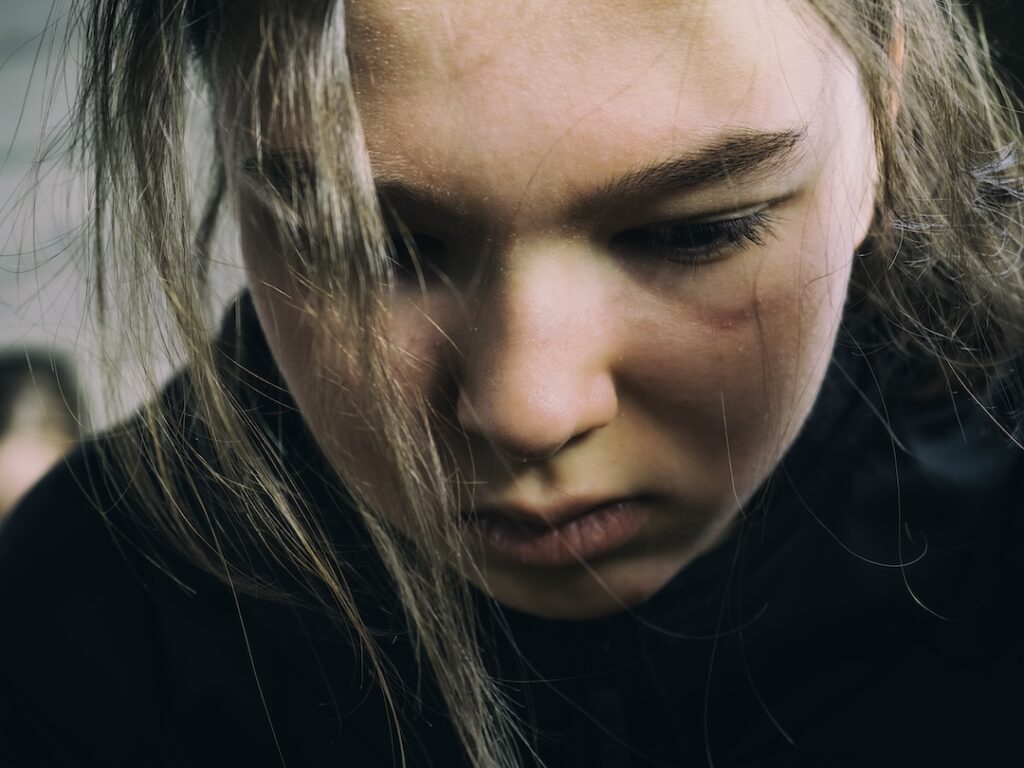
Cultural and Environmental Stressors That May Increase Suicide Risk in Teens
Minorities are more likely to experience suicidal ideation and face an increased risk of dying by suicide. These stressors must be addressed with compassion and treated by professionals who understand cultural differences.
Adolescence is a critical period for learning and development, during which social ideologies often emerge in relation to family dynamics. Teens who grow up in environments marked by trauma or chronic stress are more vulnerable to suicidal thoughts. Such environments may include:
- Substance use in the home
- Neglect
- Physical, mental, or emotional abuse
- Poverty
- Homelessness
- Starvation
If one or more of these environmental factors are present, mental health treatment is typically required for teens to find healing and prevent a suicide attempt.
Is My Teen at Risk of Suicide? How to Recognize the Warning Signs
The warning signs of suicide in teens are not always easily visible. They tend to push parents and friends away in times of stress, feeling they need to process on their own. However, this is not a healthy form of coping and can lead to tragic outcomes such as suicide. The main signs of suicidal ideation to watch for include:
- Social isolation
- Mood swings and sudden mood changes
- Eating and sleeping more or less than usual
- Changing friend groups
- Declining academic performance
- Frequent discussion of death and dying
- Collecting means such as pills, knives, guns, etc.
- Finding paraphernalia for substance use
These signs do not automatically mean your teen is contemplating suicide, but they are an indicator that something may be going on mentally. The most effective way to prevent suicide is early intervention when these signs are noticed. Talk to your teen calmly and listen to what they have to say. Work together to find a solution that works for them and move forward.

Treatment for Suicidal Thoughts in Agoura Hills, CA
Losing a close friend or family member to suicide is a deeply traumatic experience that can profoundly affect a teen’s emotional well-being and can lead to suicidal ideation. Treatment for suicidal ideation provides a structured, supportive environment where teens can begin to heal. Through evidence-based therapy, peer support groups, and skill-building interventions, adolescents can develop healthy coping mechanisms and regain emotional stability.
If your teen is experiencing mental health difficulties or expressing thoughts of suicide, immediate support is essential. BNI Treatment Centers serves teens ages 10-18 throughout the Los Angeles area with comprehensive, psychiatrist-led care. Our team offers crisis stabilization, residential treatment, and outpatient services tailored to each adolescent’s needs. To learn more about our programs, contact us today at (888) 522-1504.
BNI Treatment Centers: Science-based. Evidence-backed. Compassion-led.


